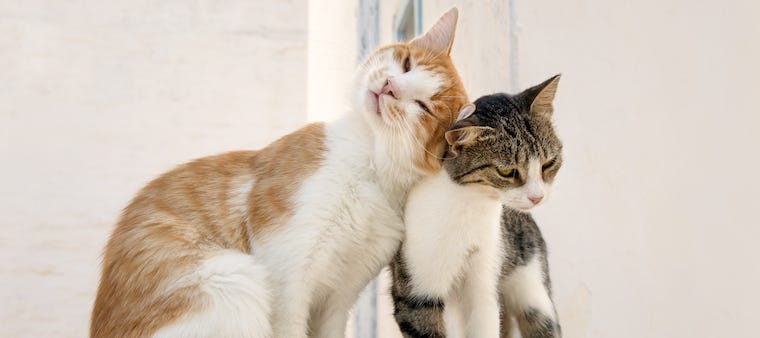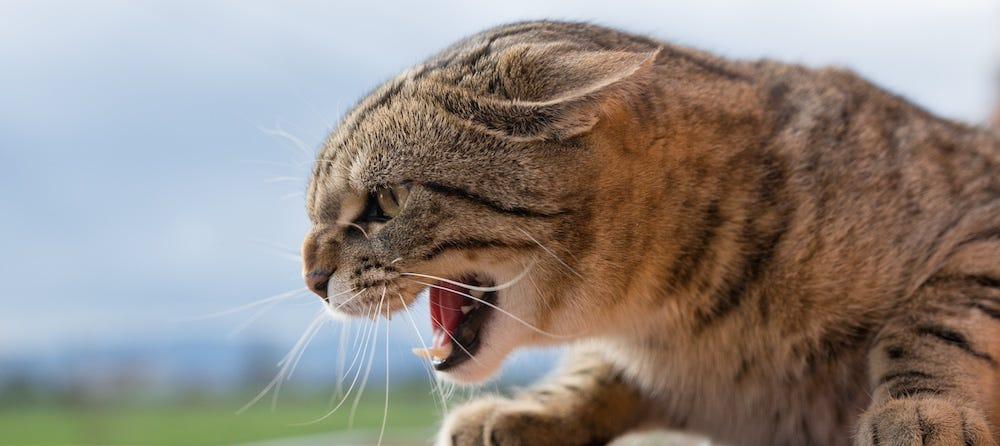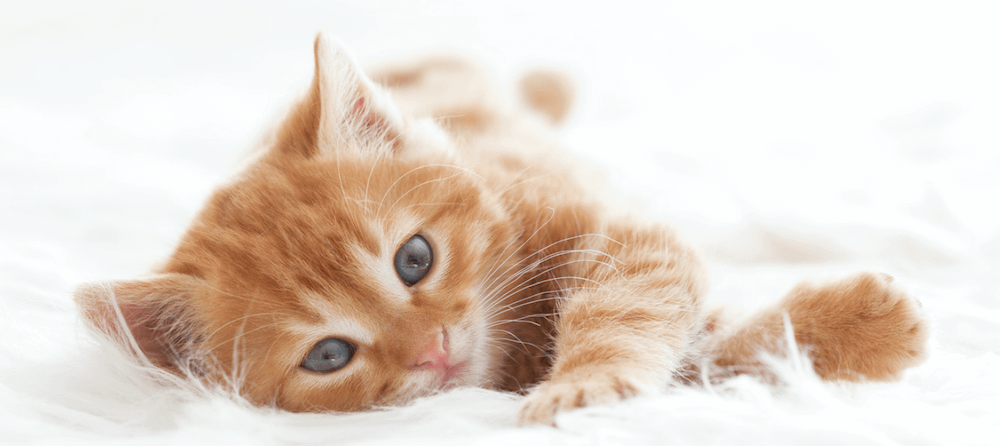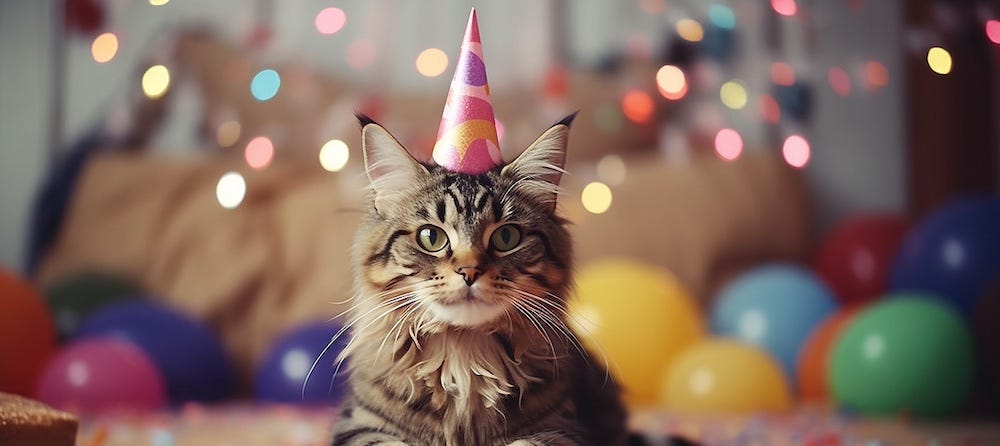Think you know a thing or two about cat body language? Sure, there are some telltale signs: flattened ears signify displeasure, while a bared belly suggests trust, and so on. However, your cat’s body language towards you is often quite different from how cats behave towards each other. To better understand our feline friends, let’s take a look at how they communicate with their own species.
Body posture and tail
Perhaps the most telling part of cat body language is overall body posture, including tail behavior. A sign that your cat is feeling friendly toward another includes holding his tail high in the air with a tall, confident posture. The tip of his tail may even crook forward as he approaches another cat that he likes. And if he’s feeling especially comfortable, he may roll over enough to display his belly—the most vulnerable part of his body.
On the flip side, if your cat is feeling uncertain or uncomfortable toward another feline, he may crouch down, tuck his tail along his body, and pause to observe the other cat. If he feels threatened, his body may show signs of aggression. This includes lashing his tail from side to side, his back and tail arched with fur standing on end, and crouching with his forelimbs close to his hind legs—which may indicate he’s on the verge of attacking. Sometimes, though, it may simply mean that he’s in an especially playful mood.
Eye contact and ears
Eye contact is a common communication technique between cats. A cat who is receptive of another’s approach and attention will look at the other cat and blink. In fact, some animal behaviorists say that the “slow blink” is a gesture of trust.
His ears will be turned forward when approaching a cat that he trusts. If he pulls his ears to the side or flattens his ears on his head, this is often an indication that he’s feeling threatened or fearful—or just plain annoyed.
Physical contact
Physical contact is also an important part of cat body language. Cats may touch noses or gently “head-butt” each other when feeling social. They often show affection by rubbing their heads against each other and along the sides of their bodies. They don’t typically rub against each other’s backs. Adorably, they sometimes even hook their tails and rub them together.
Vocalization
Cat sounds towards other felines are wide-ranging, though perhaps somewhat limited when compared to their sounds towards people. Meowing is maybe the biggest divergence from the way cats communicate with humans versus other cats. In fact, cats rarely meow at one another in greeting—this sound tends to be reserved for their human counterparts. Feral cats don’t meow or make noises much at all—and the same goes for the big cats like lions, tigers, jaguars, and leopards.
Cats purr when they are in contact with other cats, although it is not always because they’re happy. Sometimes they purr when they’re not feeling well or even in pain—the vibration acts as a soothing mechanism to help ease discomfort or heal what ails them.
When your cat is feeling fearful, he may growl or hiss to tell another cat to stay away or leave him alone. If the other cat does not listen and continues to approach, your cat may escalate his vocalization to various unpleasant cat sounds, like a snarl, spit, or yowl, prior to an attack. Cats can also howl when they are in distress. Learn more about the language of cat sounds.
Chemical signals
Finally, we musn’t forget that there’s a chemical level of cat body language. When cats rub or knead on each other, they exchange scents as well as deposit pheromones and oils from the scent glands located on their foreheads, cheeks, chins, and paws. Your cat may leave a scent trail on prominent objects around the house, letting other resident cats know that he has marked his territory.
It’s not uncommon for outdoor cats to spray urine as a way to mark their territory. If spraying occurs inside the house, it may be in response to an outside cat being on the property or another stressor in your cat’s life—including litter box woes. A self-cleaning litter box like the Litter-Robot can often help with territorial cat problems. Why? Because the Litter-Robot leaves behind a clean bed of litter after every use.
Deciphering cat body language between felines helps us better understand our furry loved ones. True, cats will always be a little bizarre to us—but we love ’em all the more for it!
Source:
Recommendations









